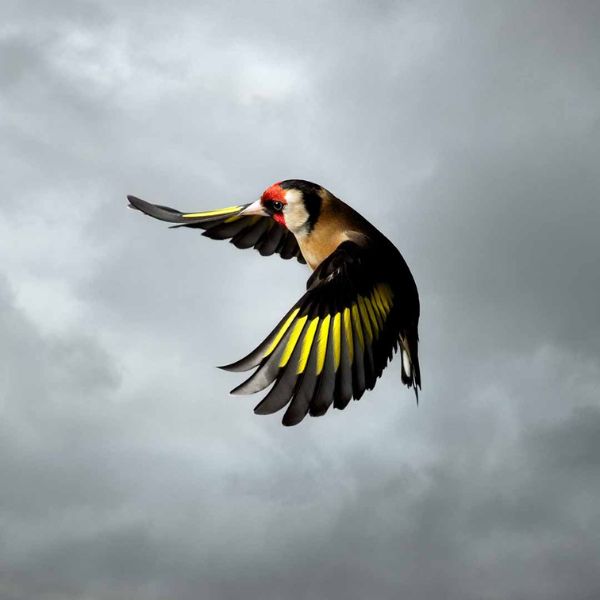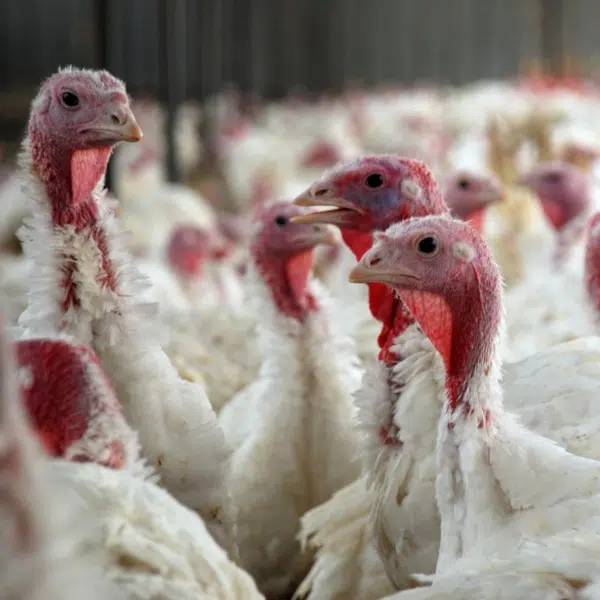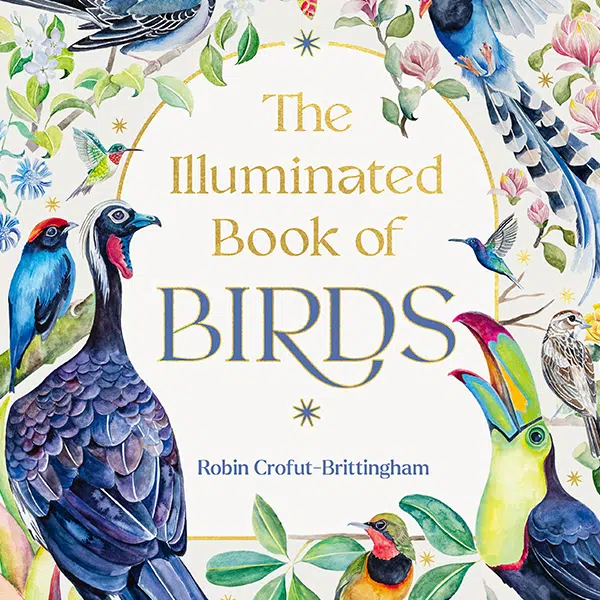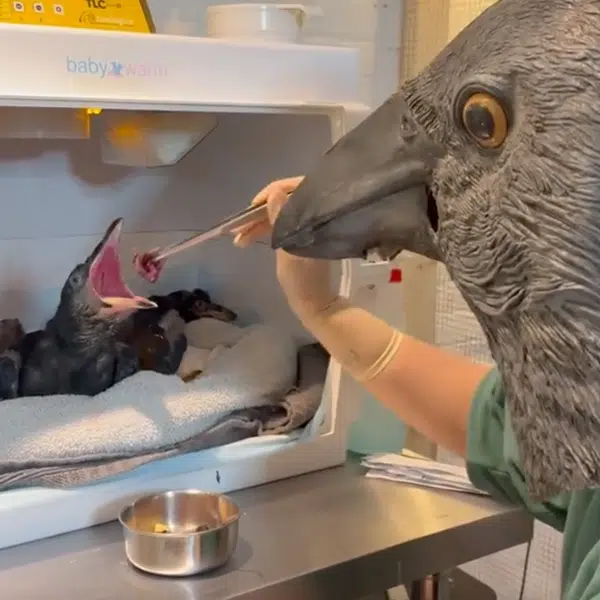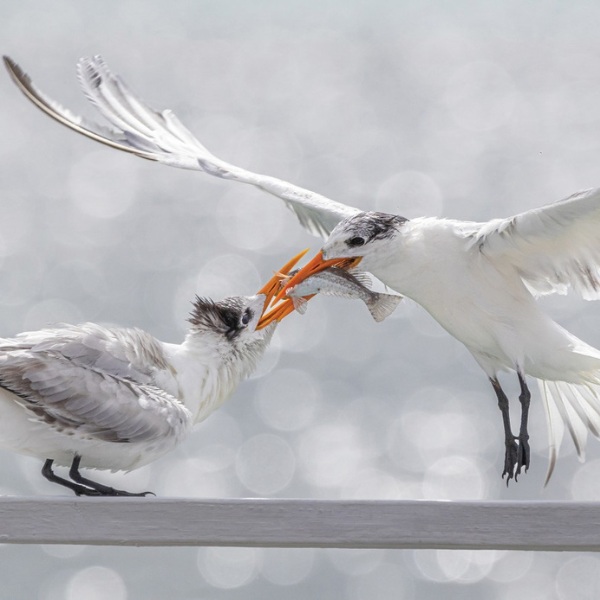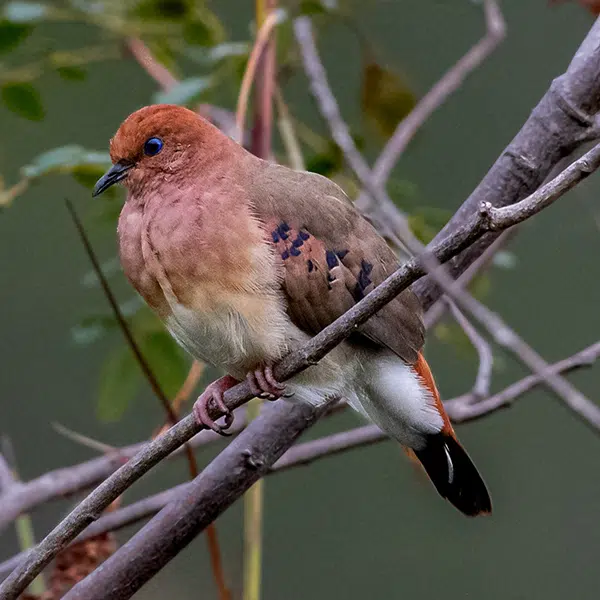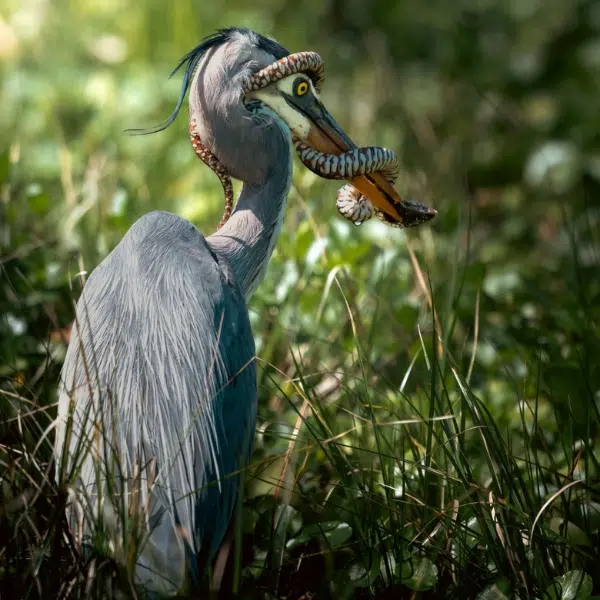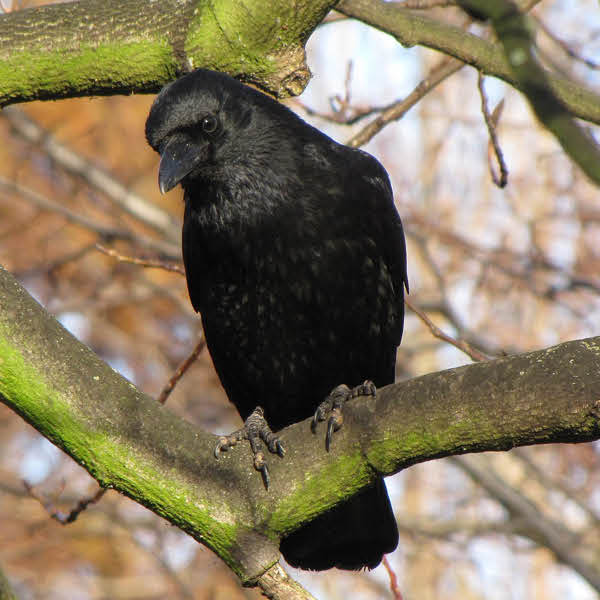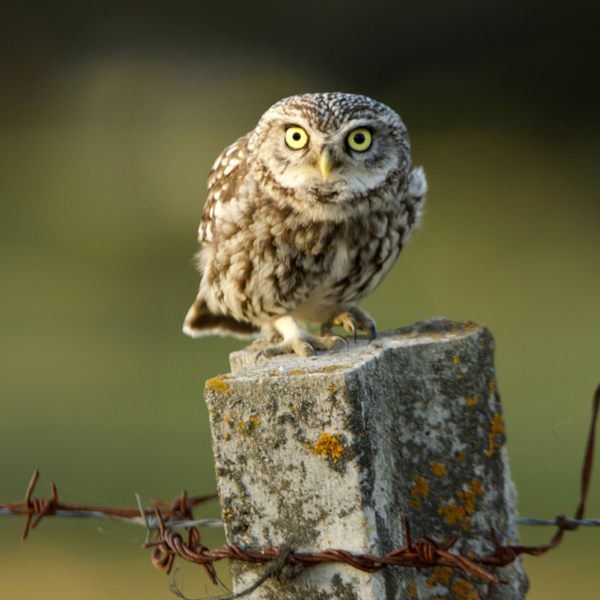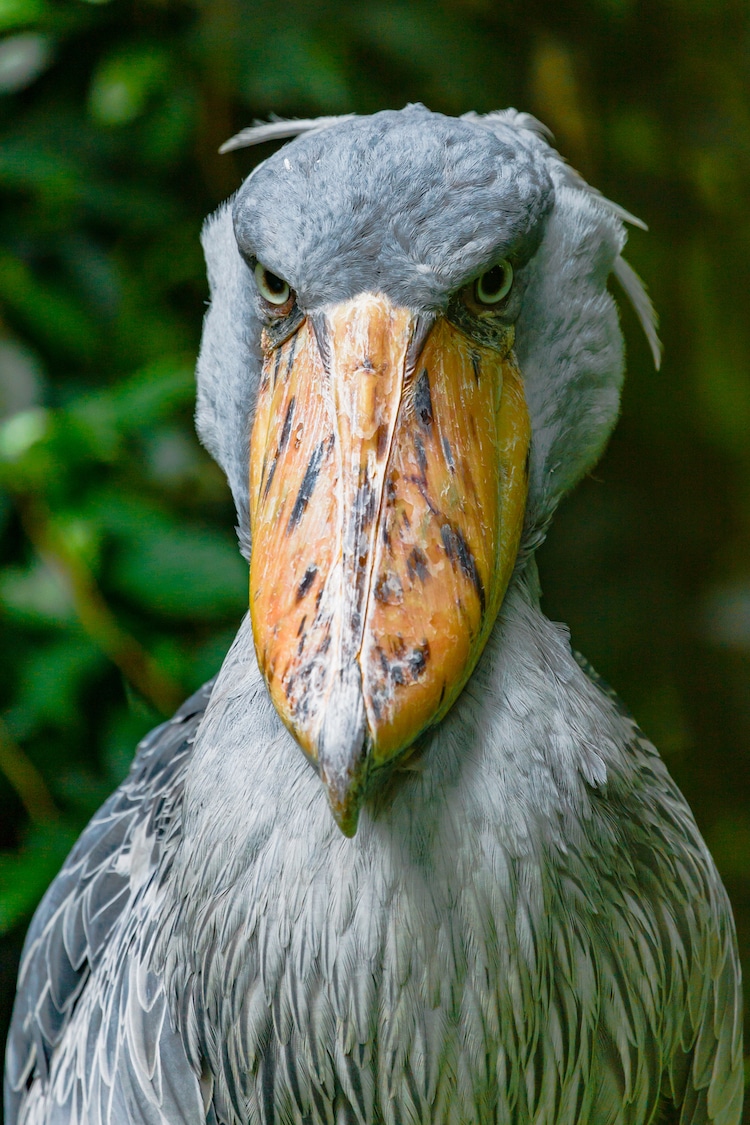
Photo: Webitect/Depositphotos
Looking like a mix between a dinosaur and a Jim Henson puppet, the shoebill stork (Balaeniceps rex) is a sight to behold. The large African bird gets its name from its distinct beak, which looks like a shoe. Sometimes called a whale-headed stork, these birds actually aren't storks at all, but are more closely related to pelicans and herons. These solitary birds are not only fascinating for their prehistoric look but also for their behavior.
Habitat and Size

Photo: riverriver/Depositphotos
The shoebill's natural habitat is the swamps of eastern Africa. Their thin legs with large feet give them the ability to wade through the vegetation of swamps and marshes from Ethiopia to Zambia. Thanks to their stature, they truly are kings of their environment. They can reach up to five-feet high with an eight-foot wingspan, making them fairly intimidating. Just their clog-like beak, alone, measures a foot long and nearly half a foot wide.
But if you came upon a shoebill, there's a good chance you'd be intimidated not only by the size but the fact that they don't move. Shoebills can stand motionless for hours, waiting for the perfect moment to catch their prey. And when the time is right, they make their move by exhibiting a behavior called collapsing. This means that they simply fall forward on their prey with their beaks wide open, scooping up their meal.
They're not only deliberate in their movements but also in their sounds. Shoebills are typically silent except when they arrive at the nest. Then, they'll clatter their bills, much like storks do, to communicate with one another.
Diet and Conservation
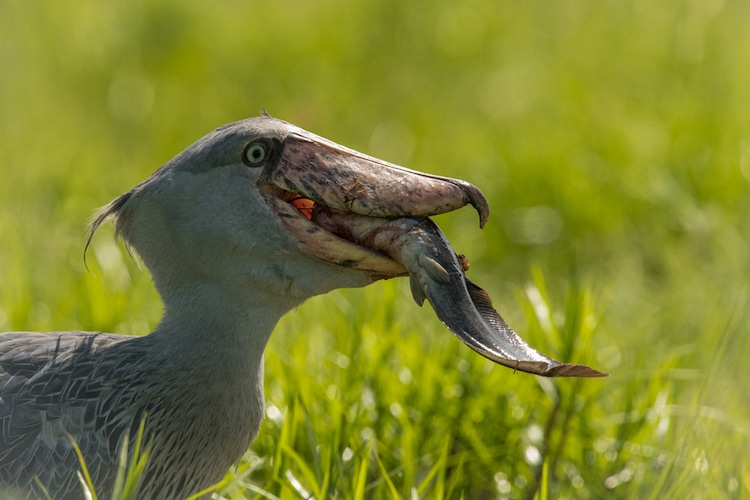
Photo: PetrSimon/Depositphotos
If you were wondering what these prehistoric-looking birds eat, don't worry—humans aren't on the menu. Though shoebills are carnivores, they're looking for small prey. Fish is the main component of their diet. They primarily feast on lungfish, bichirs, catfish, and tilapia. But they can also hunt monitor lizards, baby crocodiles, turtles, and frogs.
Interestingly, shoebills don't live in groups. Even mating pairs search for food on opposite ends of the territory. In the wild, they can live for nearly 36 years and, as one might imagine, adults don't have major predators. To fend off predators from stealing eggs, shoebills build their nests in places that are difficult to reach, and they aren't afraid to get aggressive to defend that nest.
Unfortunately, as one might imagine, the shoebill's major predator is us. Habitat destruction and industrial pollution are affecting populations. In some areas, shoebills are also hunted for food, while in others they are killed because they are seen as bad omens. Currently, the IUCN estimates there are between 3,300 and 5,300 adult shoebills left in the wild. The majority of that population is concentrated in South Sudan, Uganda, Tanzania, and Zambia.

Photo: lues01/Depositphotos
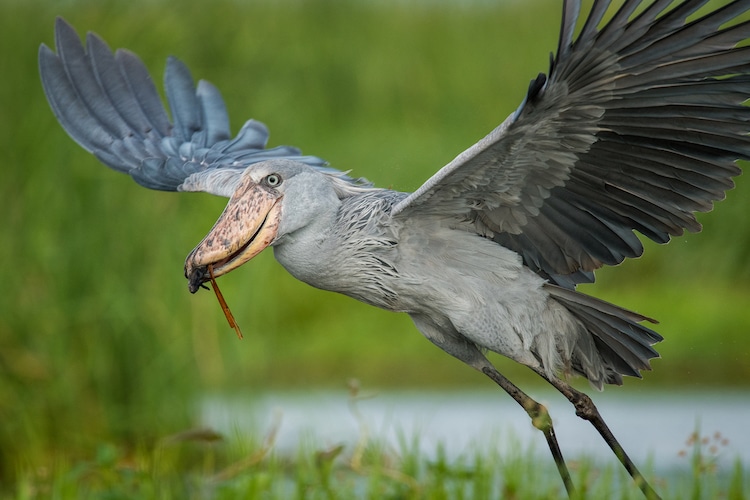
Photo: PetrSimon/Depositphotos

Photo: Nazzu/Depositphotos
Frequently Asked Questions
How big are shoebills?
Shoebills are between 43 and 55 inches (110 to 140 cm) tall. Their length from tail to beak ranges from 39 to 55 inches (100 to 140 cm). On average, males weigh 12 pounds (5.6 kg) and females weigh 11 pounds (4.9 kg).
Can a shoebill fly?
Yes, they can. Though the shoebill isn't a migratory bird, it will fly over its territory during the day to survey the land. When it does so, it shows its full wingspan, which can reach up to 8 feet.
Where can I see a shoebill stork?
If you want to see a shoebill in the wild, you'll need to take a journey to the swamps and marshes of eastern Africa. In the United States, it's possible to see shoebills at ZooTampa in Florida or the Dallas World Aquarium in Texas.

Photo: MichaelFitzsimmons/Depositphotos
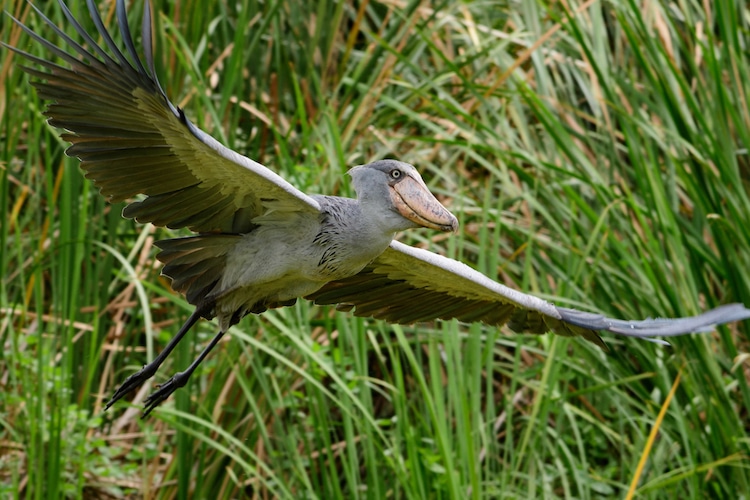
Photo: riverriver/Depositphotos
Are shoebill storks endangered?
While shoebills aren't yet endangered, their population is declining. The IUCN lists them as a vulnerable species, estimating that there are between 3,300 and 5,300 adults left in the wild.
Are shoebills friendly?
If a human came across a shoebill, the bird would likely stare. But shoebills can be aggressive when it comes to defending the nest, so don't their motionless nature fool you.
How long do shoebills live?
The lifespan of a shoebill stork is similar whether in captivity (between 35.7 and 36 years) or in the wild (35.7 years)

Photo: PetrSimon/Depositphotos
Learn More About the Shoebill Stork
Related Articles:
Rare Birds With “Vantablack” Feathers Absorb 99.95% of Light
Meet the Frogmouth, an Owl-Like Bird With a Distinctly Expressive Face
Largest Eagles in the World Are So Big That Their Talons Are Bigger Than Bear Claws
Meet the Laughing Kookaburra, the Bird With a Distinctive Call That’s in Hollywood Films











































































